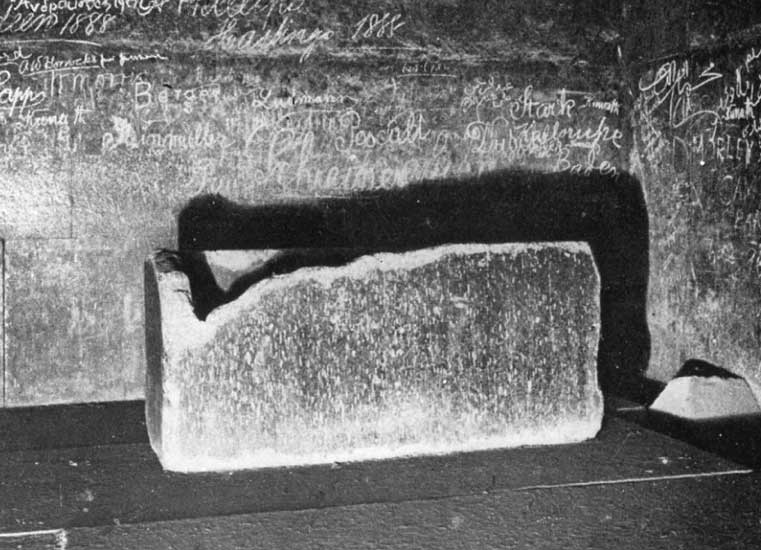What do you think about when you are about to visit the Great Pyramid, one of the most iconic ancient monuments in the world? The answer, as you traverse the uneven bedrock towards its elevated location, is its extraordinary size. However big you imagined it to be, it is never enough to fully appreciate its enormous size. In the past, its shimmering walls of casing stones, a few of which remain in situ at the base of the Great Pyramid, would have transformed the Great Pyramid into a shining beacon of light.
It is a mathematical fact that the height and geographical footprint of the Great Pyramid make it a scale model of the northern hemisphere by a factor of 1/43,200. Its design incorporates mathematical formula such as pi and phi. Its positional relationship with respect to the other two perfect pyramids on the plateau reflects the astronomical relationship of key stars associated with the ancient Egyptian death journey; these being the belt stars of Orion, the hunter, and the wing stars of Cygnus, the celestial bird. Their positioning conforms to a very basic geometry with dimensions featuring cosmic numbers such as 54, 72, 108, and 432. Egyptologists are aware of all these facts, but choose to ignore them, suggesting they are no more than simple coincidences.
Then there is the function of the Great Pyramid’s internal chambers. The natural acoustics of the King’s Chamber, with its walls and ceiling lined with huge granite slabs, seems specifically tuned so that even the slightest sound can make the room resonate in perfect harmony with the human voice. The same can be said of the empty sarcophagus it contains. Even a gentle hum can make its sides vibrate with sound, an effect that might very easily induce a slightly shifted state of consciousness in anyone who lies within its interior.

The ‘sarcophagus’ found within the Great Pyramid of Giza, in the King’s Chamber. (Public Domain)
So, was the Great Pyramid really a tomb? Tomb is a word that conjures the image of a stone monument in a church or churchyard—a structure wherein had been laid the mortal remains of an individual interred following a suitable funeral service. This, however, misleads us when it comes to trying to understand the true function of the Great Pyramid, for it appears to have been far more than simply a tomb. More apt would be to describe it as an ascension machine; any internee lying within its sarcophagus is to be seen not so much as a cadaver at rest, but as an ascended spirit piloting a cosmic vehicle of stone across the eternal realms of time and space. Whether or not this was the original function of the Great Pyramid intended by the architect almost does not matter anymore, for when you are lying in that sarcophagus, the sense of transcendence is unlike anything you can experience anywhere else in the world.
Top image: The Great Pyramid of Giza (AdobeStock)
--
By: Andrew Collins
Category: Artifacts & Tech
Period: Prehistoric
Location: Africa
Issue: April 2019




